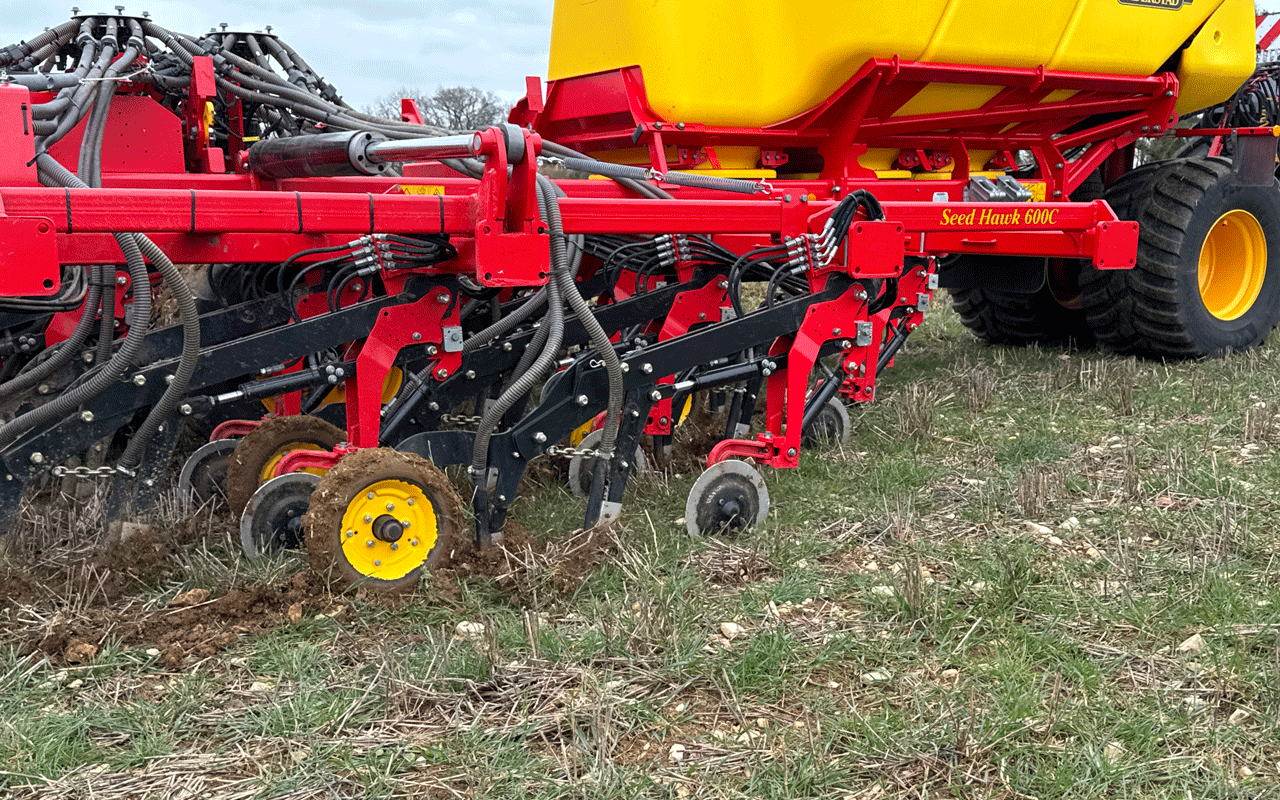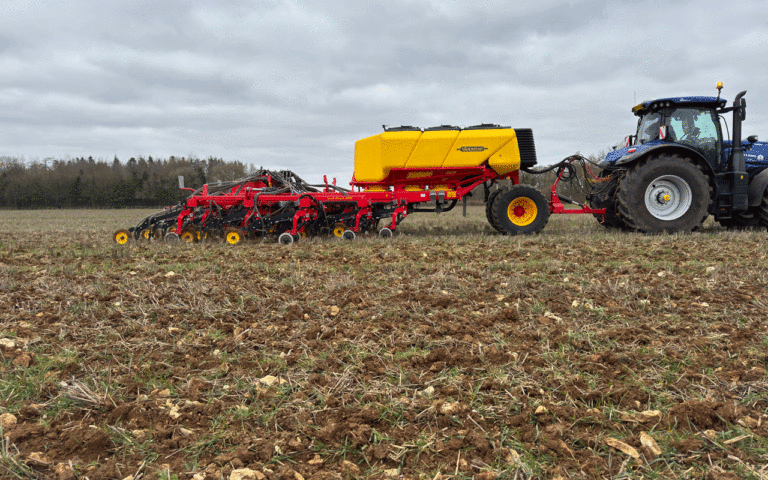It has been a few years since the UK saw the Väderstad Seed Hawk. Initially developed by the Canadian company of the same name, Väderstad started working with Seed Hawk in 2006, giving the Swedish manufacturer an entry point into the North American market.
Over the next decade and a half, it increased its stake in the business until fully acquiring the brand in 2019.
Bringing the company under full control has enabled Väderstad’s own electrics and Isobus functionality to be fully integrated into the system, including the iPad-based E-Services system. According to the company, this will make operation easier for customers.
The revamped Seed Hawk range is available with three models, offering working widths of 6m, 8m and 9m.
There is already demand for wider units to suit different controlled traffic farming tramline widths, although the company is focusing on these initial models for now. Each comes with a 7,000-litre hopper, split into three segments of 2,400 litres, 2,000 litres and 2,600 litres.
The 6m version uses two Fenix III metering systems on each side of the machine to ensure accurate distribution of product, while the 8m and 9m models increase this to three per wing.
Calibration is straightforward using the E-Services system. It can save calibration settings based on the product and the output rate (up to 250kg/ha for seed and 400kg/ha for fertiliser) for one-touch set-up.
If a new calibration is required, this can be done per hopper segment and per metering system. Once the calibration is complete, the settings can be applied across the whole drill, or just to the relevant segments.
A true direct drill
While various Väderstad drills have been promoted as capable of direct drilling, depending on conditions, the Seed Hawk is the only true direct drill offered by the company.
According to regional sales manager Rowland Dines, this has led to a dedicated customer base.
“There is a hardcore following for this machine, and this has led to a lot of feedback which we have been able to action on the new models,” he explains.

Disc openers
New features on the Seed Hawk include a row of disc openers, which can be used where there are high levels of crop residue. “What we saw with some of the previous machines is that the trash would wrap around the coulters,” says Rowland.
When conditions are clear, the row of discs can be lifted out of work. Following this are two rows of tine coulters. The first is for fertiliser, which places product at a 38mm offset to the seed and at a deeper depth.
This places it directly within the root development zone. The fertiliser coulter is designed like a cultivator point, lifting the soil and pushing clods aside to leave a small band of tilth for the seeding tine.
The seeding tine is angled in the opposite direction to the fertiliser coulter, enabling it to create a shelf within the seeding area.
This covers the fertiliser with soil ahead of reconsolidation and leaves the seed in a tilth that Väderstad claims will promote good seed-to-soil contact. Finally, individual consolidation wheels close the slot.
Two coulters are available; a standard version with tungsten tips to minimise wear, and a three-piece cast type, which Rowland expects to be the most popular option.
The standard row spacing is 250mm, but there is the option of band sowing, which places twin outlets at each coulter, reducing the spacing to 170mm.
Depth control is done mechanically and to maintain this even over undulating ground, the 6m model uses hydraulic downforce across the working width. This is combined with caster wheels on the 8m and 9m machines to follow the ground.
The downward force at the coulters can be adjusted up to 350kg, with a dynamic weight transfer system to enable smaller tractors to be used up front. For the smallest model, a 200hp tractor is required up front, increasing to 280-300hp on the wider models.
Precise and direct
The E-Services system can run up to three variable-rate maps, meaning seed and fertiliser can be applied based on application maps.
If the operator is aware of areas in the field that require a different seed rate, it can also be increased in increments direct from the cabin.
While not initially available, it was acknowledged on the day that there could be scope to add automated variable-depth control based on soil maps in the future.
Individual section control is also available, and updates across the machine have made this more efficient. “Pre-charged accumulators have been fitted across the working width, which means the lifting and lowering functions work instantaneously,” says Rowland.
“We’ve also fitted a more efficient fan, which has cut the hydraulic requirement to 85 litres/min on the 6m, and 110 litres on the others.”
And while the machine is a lengthy piece of kit – at nearly 12m – with the large tank mounted between the tractor and the toolbar, a dolly-type supersteer system has been fitted at the front of the long drawbar. During our visit, the tractor and drill were able to turn in the yard without any difficulties.
“This will also help with turning into tight gateways, or pulling back out onto narrow lanes,” notes Rowland.
A change in mindset
Somewhat ironically, after spending years encouraging operators to go faster with the Rapid and Tempo machines, Rowland explains that switching to the Seed Hawk requires a change in mindset.
“This isn’t about forward speed. In fact, to get the best results we would recommend a top speed of 9kph. Instead, it’s about the overall benefits of cutting back on tillage.
“Operators should see an extended working window, which will cancel the slight reduction in forward speed; even germination and reduced input costs.”


